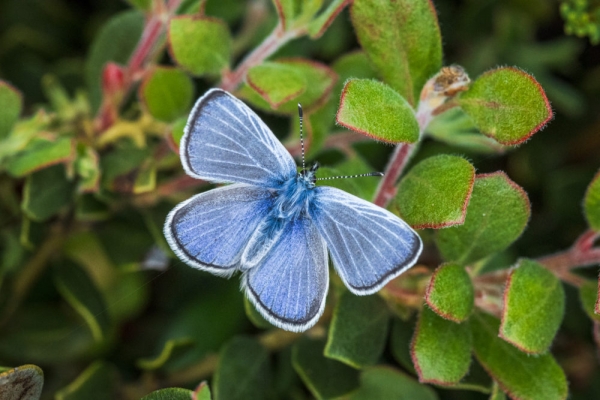More than 80 years after the iconic Xerces Blue butterfly vanished from San Francisco, researchers have analyzed century-old specimens of the butterfly to track down its closest living relative, the Silvery Blue. Last week, they released a handful of Silvery Blues on the western edge of the city, where Xerces Blues once thrived.
More than 80 years after the iconic Xerces Blue butterfly vanished from San Francisco, researchers have analyzed century-old specimens of the butterfly to track down its closest living relative, the Silvery Blue. Last week, they released a handful of Silvery Blues on the western edge of the city, where Xerces Blues once thrived.
In 1943, the Xerces Blue became the first U.S. butterfly to be driven to extinction by development after builders destroyed the sand dunes where it made its home. Thirty years ago, officials began to restore a swath of those sand dunes in the Presidio, a former military base, and as part of that project they sought to bring back native wildlife, including rough-skinned newts, western pond turtles, and San Francisco forktail damselfies. But they had no Xerces Blues. To fill the gap, they would need a very similar butterfly, one that was suited to the cool, foggy climate and would feast on the deerweed that grows among the dunes.
Read more at: Yale Environment 360
A Silvery Blue butterfly. (Photo Credit: Gayle Laird)




